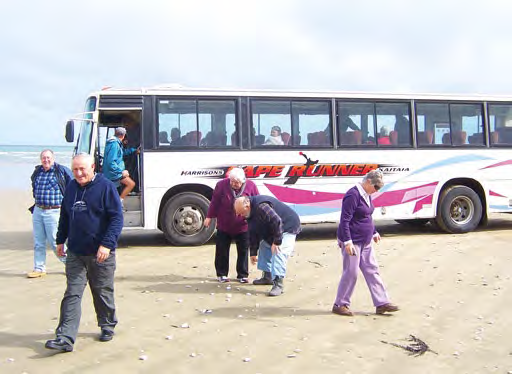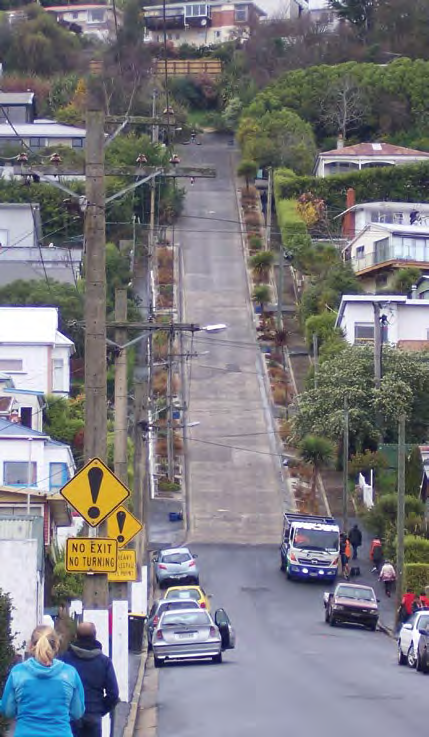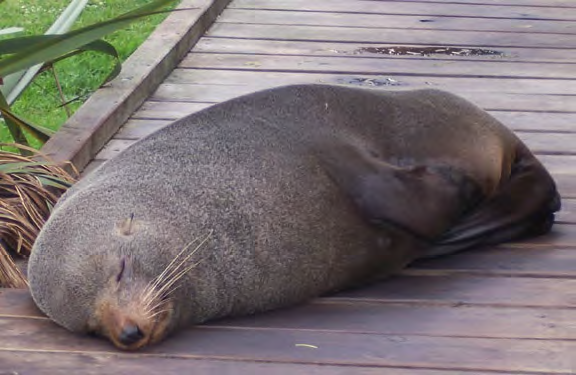
The seed was planted over 12 months ago and from that moment, the plant grew at an alarming rate. Eighteen friends, including 14 Clarence Valley Ramblers Chapter members, had agreed to go on a safari to New Zealand. Our team leaders, Bob and Veronica Salmon N47470, who travel across yearly, assured us that they knew the best places to visit without leading us astray.
We had a meeting, ironed out a rough route, and decided what we wanted to do and see. Bob then went about obtaining prices and haggling for some great deals. After another brief update, many phone calls and emails, all was ready.
After making our way to Gold Coast Airport, we all met up for our early morning flight. Everyone arrived safely and the excitement was high; cameras were flashing and there was plenty of laughter and merriment about.
On nearing Christchurch there was much pointing and oohing as the snow caped peaks of Mount Cook came into view. On arrival we made it through customs without many problems and headed straight to our hotel for a two night stay. We hired a mini bus and half of the group went touring through the city, while the others went to the Antarctic Centre. The Centre is a must do, with a firsthand impression of what life would be like in the Antarctic. You can even experience gale force winds and icy wind chill, find shelter in an igloo, or drive in a snow mobile. In the afternoon the two groups met up and swapped activities. Christchurch still had several buildings waiting to be demolished or given a new life after the February 2011 earthquake. A poignant memorial to those who lost their life in the earthquake is a block of land where a church once stood. It is here that 185 different, white painted chairs stand; one chair for everyone who lost their life on that fateful day.
On the second evening we went to a Maori village and had dinner. This was a great introduction to Maori culture and we were able to try the Haka and twirl the pois.
On day three the men in our group went to pick up our vehicles while the ladies enjoyed a leisurely breakfast and tried (unsuccessfully) to repack the suitcases.
Sticking to the coast we travelled past beautiful scenery with glimpses of snow in the distance; Timaru, Oamaru and on to Dunedin. Here we enjoyed a Speight’s Brewery tour and a wonderful meal; there were even tastings for those who like the brown ale. Dunedin Railway Station is the most photographed in NZ and you can see why when you enter the impressive building. The ornate cornices and timber work are very impressive, with lovely gardens out front it looks more like a palace than a railway station. From here we took the historic Taieri Gorge Railway tour. The railway construction started in 1879 but within a year had become a casualty of the depression. It was 1989 before the first section was opened. The Wingatui Viaduct is 197 metres long and one of the longest in the Southern Hemisphere. Another must see is Baldwin Street, considered the steepest residential street in the world it has an average gradient of 1 in 3.41 and is 161.2 metres high.

Invercargill, at the bottom of the South Island, is a hub of activity. With a short drive to the Bluff you can experience one of the oldest European settlements in the country, and one of the southernmost parts of the Island. It was hard to enjoy the view through the wind and rain while we were there, but at least we can say we went. Also worth look is a motorbike from the movie Fastest Indian, along with an impressive range of old cars in perfect condition at Hayes Hardware Store.

We then travelled north-west via Te Anau, a picturesque village built along the river, and headed on to Milford Sound. It was here that the pure beauty and fantasy of the place truly grabbed you. On nearing Milford we travelled through a tunnel and emerged to a scene that can only be described as breathtaking. There was snow everywhere; our heads were twisting 360 degrees just to see it all.
The next morning we toured the Milford Sound which was very impressive even though the wind was blowing a gale. The captain stated he had never seen so many waterfalls, let alone the fact that they were all blowing upwards in the wind. After our cruise we discovered that the one and only road out was closed, due to an avalanche. We stayed in the departure lounge until we were informed that a total evacuation of the area was happening. We heard later, that the road was closed again for six days. Something different to tell the grandkids, that’s for sure!

Queenstown was next on our itinerary; a playground for the adventurous, with a cable car to the summit and a luge ride down for some. Everything is on offer here. It’s a pretty town with a good range of shops and some lovely scenic drives. Afterwards we headed to Arrowtown followed by Wanaka - home of the Warbirds over Wanaka - a must for those interested in planes. From here we travelled over the Haast Pass to Fox Glacier, where you can walk to the end of the receding glacier. We followed the west coast road to Greymouth before veering east to Reefton; a small town we stopped at for supplies and visited the Bearded Mining Co. which is worth a look.
We arrived at Hanmer Springs to visit the hot springs and try out all the pools of varying degrees. It was here that a magical, dream-like moment took place – we were sitting in the Springs when snow began to fall on us! Truly amazing! The next morning we awoke to a covering of snow and the sight was absolutely beautiful. It was soon time to head to Kaikoura, home of a seal colony. These lovely animals were constantly basking in the sun and looked like they were enjoying life. We did a detour to Nelson before heading to Picton Van Park for the night.
The next morning we said goodbye to the South Island and boarded the ferry for Wellington. Our next destination was Napier on the east coast which has distinction of some of the best sunshine hours in New Zealand. Known as the art deco city, it was virtually rebuilt after a massive earthquake in 1931. Lots of choices here too, with guided art deco walks, 70 wineries in the region, Cape Kidnappers Garnet Colony and the National Tobacco Company. Although this closed operations in 2005 it is worth a look, especially at the opulent décor inside.
Lake Taupo is another lovely area with lots to see and do. Once again we ventured off, exploring the Forgotten World Highway. From Taumarunui to Stratford (named after the birthplace of Shakespeare), this 155 kilometre winding, narrow road is not one for the faint hearted, but driving with care offers an unparalleled journey through NZ’s pioneering past. You could easily spend several days exploring if time permitted, there is just so much to see and do. On arrival at Stratford take a look at NZ’s only glockenspiel clock tower, which performs scenes from Romeo and Juliet.
The Waitomo Glowworm Caves are a must see. There are several caves to choose from, all offering something different, but the glowworms that adorn the walls and ceilings in some of the caves are a spectacular sight to see.
From here we headed to Rotorua, home of steaming geysers, hot boiling mud and a pungent sulphur smell. There is so much on offer here, with most people planning a trip to the Agrodome Sheep Show. Rotorua Museum of Art and History is definitely worth a visit and includes a tour of the old mud baths. The Museum contains a treasure trove of history and the building itself is very impressive along with the gardens.
Next we travelled out to the coast to Waihi, with a stop to explore the Martha Mine. The Mine is an open pit gold mine and has a history that spans three centuries. The beaches along the Coromandel Peninsula are worth exploring. There is a lovely coastal drive to Hot Water Beach, where you can dig yourself a hole at low tide and sit in the hot water to relax. We then headed to Thames, a reasonable sized town with a free dedicated RV rest site, and on weekends they have a miniature gauge railway open for rides beside the river.
Heading towards Auckland and then north we came across Dargaville, a pretty nondescript town, but with one of the best museums we have ever visited, and the lookout from there was pretty impressive too. From here we travelled to Kaitaia where we joined a full day bus trip to Cape Reinga. We travelled along Ninety Mile Beach spotting an occasional seal before diverting up a creek bed to the tallest sand dunes. We only had three takers in our group decide to clamber to the top with their sled, and what a sight they made as they hurtled at break neck speed to the bottom. It was at Kaitaia that one of our group, who shall remain nameless, managed to dislodge his grey water tank on the dump point. After a stressful night all was rectified the next morning.

We then headed down the coast towards Russell and the Bay of Islands. Unfortunately the day was windy with rain; the water was grey instead of the lovely clear blue we had expected and the islands were a distant blur. Oh well, there is always next time! Seventeen kilometres south and we arrived at the infamous Hundertwasser toilets at Kawakawa, a unique building built by internationally regarded Austrian architect, Friedensreich Hundertwasser who passed away in 2000. Ceramic columns, a garden roof and the colourful exuberance of the toilets see most tourists stopping here for a visit. This is also the only town in NZ to have the railway running through its main street.
All good things must come to an end, so we headed back to Auckland for our early morning flight home the following morning.
Our trip went for 30 days, with eight nights in van parks, five nights in Department of Conservation (DOC) sites, and prices ranging from free to $10.00 per person depending on their whereabouts and facilities. The average was about $5.00 per person and we enjoyed 14 nights freedom camping. In our opinion, the majority of NZ is motorhome friendly and the campsites are well sign posted. We had the luxury of diesel heaters, which are not available in many of the rentals, enabling us to freedom camp. Many of the roads were often narrow and winding, so care needs to be taken at all times. Although the distance between towns isn’t large, the time taken to drive there is much longer than we are used to here.
Category: Unknown
Written: Fri 01 Mar 2013
Printed: March, 2013
Published By: